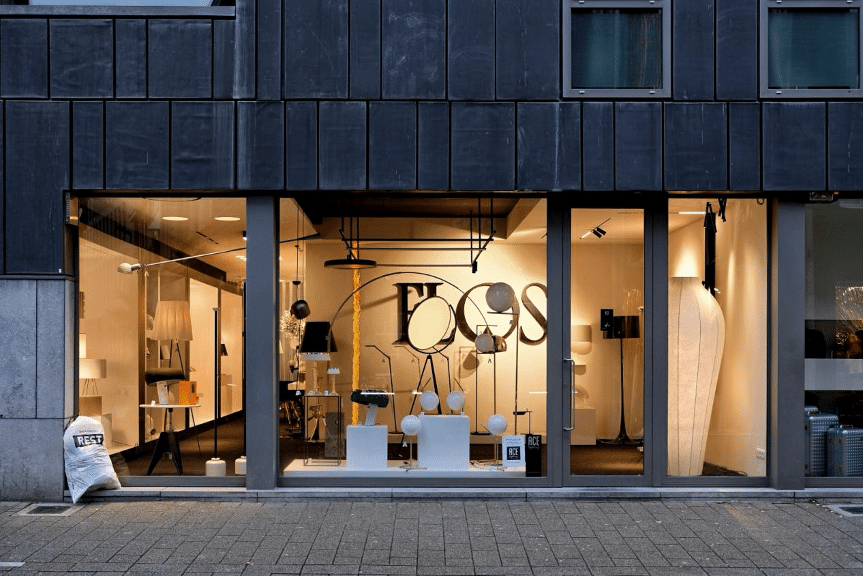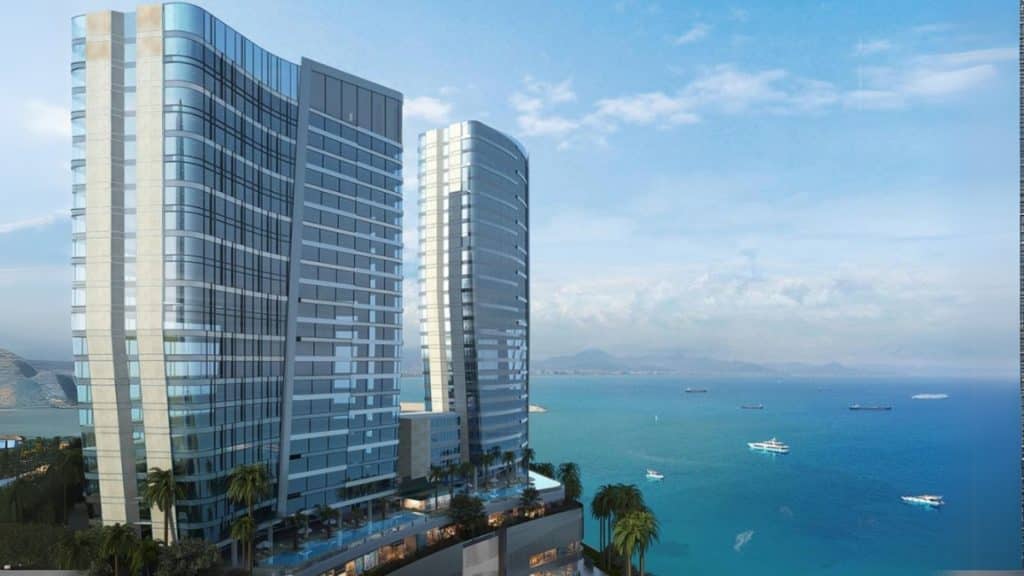Curtain wall or storefront? These two systems can be hard to choose unless you know the difference between curtain walls and storefronts. With respective advantages and disadvantages, the final choice impacts the building’s visual appeal and functionality.
In this article, we will give a comprehensive comparison of curtain wall vs. storefront to let you understand both systems. After reading this page, you will know how to make the right choice according to your needs and budget considerations.
Curtain Wall vs. Storefront: What is a Curtain Wall?
Curtain walls are a non-loading architectural design that can be found in commercial and even some residential buildings. These systems typically consist of robust aluminum frames and panels made of glass, metals, or light stones. They are attached to the building and, hence, do not bear any building weight. Instead, they aim to protect the building from environmental factors, like wind and rain, and give the building a sleek appearance.
Storefront vs. Curtain Wall: What is a Storefront?
Storefronts are also non-bearing components. Generally, they are utilized in commercial buildings to exhibit the products well to passers-by. They typically incorporate large glass displays to showcase the store’s products and services and thin frames made of aluminum, steel, wood, etc., to maximize the display area and offer a modern aesthetic.

Curtain Wall vs. Storefront: A Comparative Analysis
The details of curtain walls and storefronts can differ from multiple perspectives. Below are some general aspects:
Applications and Purpose
Curtain wall systems can be installed over multiple floors and at any portion of the building. This makes them ideal for multi-story and high-rise buildings. In contrast, storefront systems are typically installed on the ground floor and are usually seen in smaller buildings that consist of one or two floors. Comparatively, curtain walls emphasize insulation, whereas storefronts care more about visibility and access.
Installation and Maintenance
Being larger and thicker, curtain walls can require more careful installation and casual maintenance job. Comparatively, storefronts can be easier to install but may require more frequent maintenance, as they are installed on the high-traffic ground floor, and dirt and grime can impact the display effect.
Energy Efficiency
Both systems do well in letting natural light get into the indoor area and hence reduce the cost of lighting. Specifically, curtain walls ensure better energy efficiency due to thicker glass panels, especially for those that are equipped with the thermal break technology.
Cost Considerations
Curtain walls require a higher initial investment for materials and production, but they are a superior choice due to their functionality. Meanwhile, storefronts are the more affordable option, and they are great facade solutions on the ground floor.
Aesthetic and Design Flexibility
Generally, curtain wall systems provide extensive design flexibility, allowing for innovative architectural features and large expanses of uninterrupted glass, while storefronts have comparatively limited design options but enhance street-level presence with customizable layouts and finishes.
How to Find a Reliable Aluminum Product Manufacturer
From the above explanation, you can have a general idea of whether curtain walls or storefronts would be your better choice. Then, how can you choose and cooperate with a reliable manufacturer to have the high-quality system you wish?
First, you should figure out what materials you would like to utilize for your building. Typically, aluminum and glass systems are popular choices for their sleek and modern designs, which narrows your considerations down to aluminum product manufacturers. Then, you can make the final choice by considering experience, manufacturing capability, and service quality.
Here, HOMI, a top aluminum product manufacturer, can be a great example to examine how these criteria work.
- Experience: HOMI boasts 13+ years of experience in offering high-performance aluminum solutions for commercial and residential buildings. Their wide offerings include aluminum curtain walls, windows, doors, and profiles, making HOMI an experienced partner to have comprehensive solutions.
- Manufacturing Capability: With a 50,000㎡ industrial plant and 12+ production lines, HOMI masters different aluminum treatment techniques, including powder coating, anodic oxide coating, electrophoresis, and more. Its robust manufacturing capability ensures its clients can have high-quality building components within a short time period.
- Service Quality: HOMI is also renowned for delivering exceptional service quality. From consultation to after-sales support, its expert teams provide personalized assistance to satisfy each client’s needs. That’s also the reason why HOMI is chosen to be responsible for numerous famous projects, like the Glas Tower and the CEBU integrated resort in the Philippines.
Conclusion
Understanding the comparison of curtain wall vs. storefront is crucial for making sound decisions in building design and construction. While curtain walls excel in high-rise applications with their structural integrity and energy efficiency, storefronts cater to retail environments by enhancing visibility and accessibility.
For those considering aluminum systems, HOMI emerges as a recommended manufacturer, offering tailored solutions that marry functionality with aesthetic appeal. If you are in need of reliable aluminum construction systems, you may contact HOMI to explore their latest offerings and discover how they can elevate your next architectural project!

